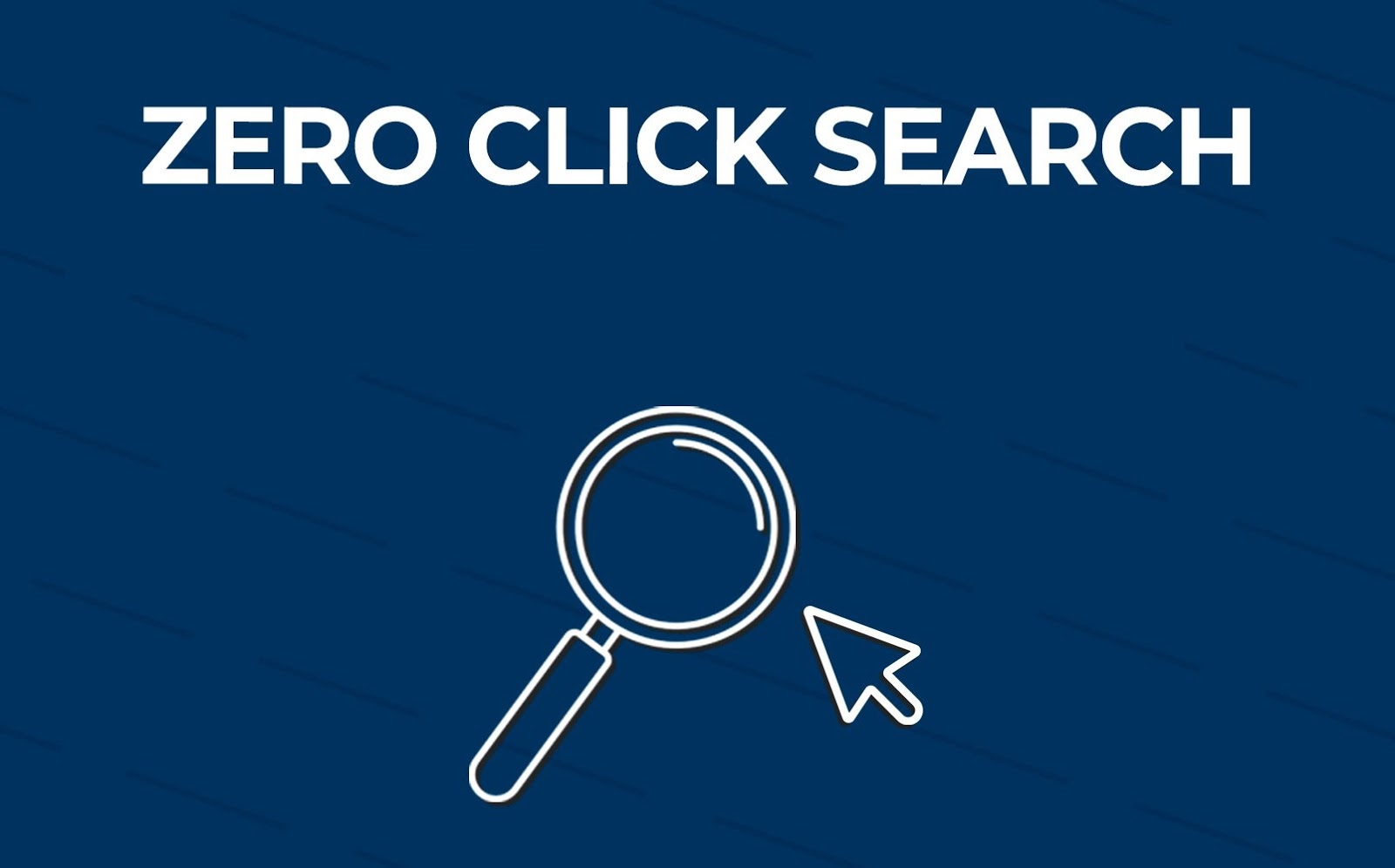19 Jan

Google’s SERPs have increasingly become a one-stop-shop for users’ needs. This has led to a rise in “zero-click search”, where results pages provide enough information to save users from clicking onto any organic results at all. Zero-click search is not as much of a hurdle as you might think.
A Zero-click search happens when Google can answer a search or allow the user to take an intended action without leaving their search environment. Generally resulting in zero-clicks to any websites and a reduction in traffic. A report shows nearly 50% of all searches result in zero clicks. And these behaviors tend to be higher on mobile devices.
What is a zero-click search?
Zero-Click Searches refer to a search engine results page (SERP) which answers the query right at the top such that the user doesn’t need any further clicks to complete the search. A zero-click search is one that satisfies the search intent at the top of the SERP.
For example: A search for “how old is the queen”, or even “queen age” will display an answer that doesn’t require another click or an additional site visit:
SEO strategies for the zero-click search landscape
Here is how you can tailor your search strategy to make zero-click work for you.
1. Focus on clicks-per-search during keyword research
While working in SEO, you must be familiar with the strands of data which are used by the main keyword tools to help you determine which terms are most worth optimizing for, such as search volume and where your pages currently rank for those terms. Clicks-per-search (CPS) is one of the neglected metrics in an increasingly zero-click SERP landscape.
CPS data is useful in the context of zero-click, as it takes into account the rate of traffic these keywords obtain from people finding your page through SERPs, rather than simply how many people are looking for the term itself. If your pages rank well but achieve a low CPS, then you’ll know it’s time to re-optimize your content for related keywords with a better CPS rate.
2. Target featured snippet positions
Snippets are a huge part of the zero-click landscape, though they only appear for 12.3% of search results in total. Ahrefs has noted that around 82% of them are presented in paragraph form, with 11% showing as a list, and 7% as a table. Therefore, you should not only be identifying featured snippet opportunities relevant to your website, but you should also be considering how to best format your content to have the best chance of occupying a given featured snippet.
SEO tools like Ahrefs and SEMrush can tell you which queries already exist with featured snippets, helping you to find opportunities to create relevant snippet-worthy content that appeals for long-tail search queries. You should keep it concise, not more than 55 words and use HTML to appropriately mark up any lists or tables. Keep user intent in mind, and be sure to adapt your content to the way a query’s current featured snippet is presented on SERPs.
3. Optimize your content on Google’s own property
Another reason for zero click search increased prevalence is the total number of resources and tools that Google has at its disposal. From a commercial point of view, Google wants to promote and prioritize these features to users. It’s therefore critical that your business’s profiles and content on each Google property are optimized accordingly. This can give it the best chance of being seen at the top of SERPs, which goes beyond the confines of regular organic search.
To increase your chances of visibility in these areas of SERPs, you should make sure that you have filled out all relevant information on your Google My Business profile, which will also be beneficial when it comes to your Google Maps appearance. Similarly, optimizing your YouTube videos with informative, keyword-rich titles and descriptions, and categorizing them correctly will give you the best chances of being seen, and improving your CPS rate.
4. Incorporate structured data into your content markup
Schema markup is important. Making use of it in-order with keeping your Google My Business profile updated can encourage crucial data regarding opening times and contact details to be pulled through in SERPs.
Marking your content up will also have benefits when trying to rank for rich answers, snippets or “People Also Ask” queries related to your target keywords, as well as events or information which could appear in carousel view. Optimizing for these features will allow you to take up more real estate within a results page and in an increasingly clickless search landscape, this kind of visibility is vital.
5. Use relevant images and optimize thoroughly
Optimizing for all of Google’s metrics is key, and that includes image search. Incorporating eye-catching, unique and relevant images throughout your website is something you learn in web design 101, but it’s easy to make them work for you in an SEO context.
Image filenames and alt-text are two signals that have traditionally been used to rank images within Google’s image search tool. But beyond appearing higher in image results, optimizing images can be beneficial within Google’s organic SERPs.
Wrap up
Zero-click’s growing prominence complicates measuring SEO efforts, with a widening gap between the number of searches performed and the number of clicks on the search results. With Zero-Click metric, you can optimize your SEO, PPC and Search strategy for keywords that drive site visits and engagement.
